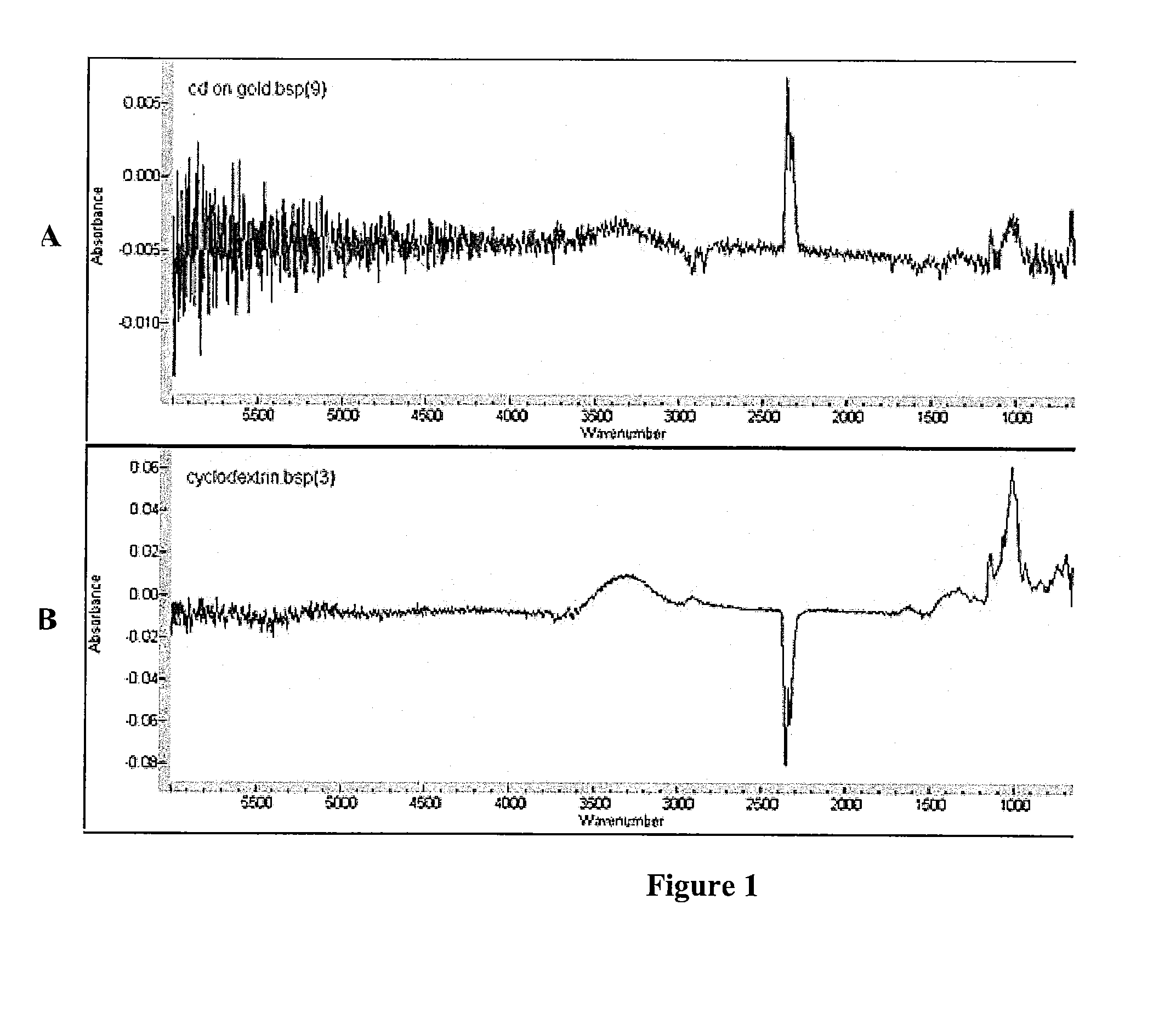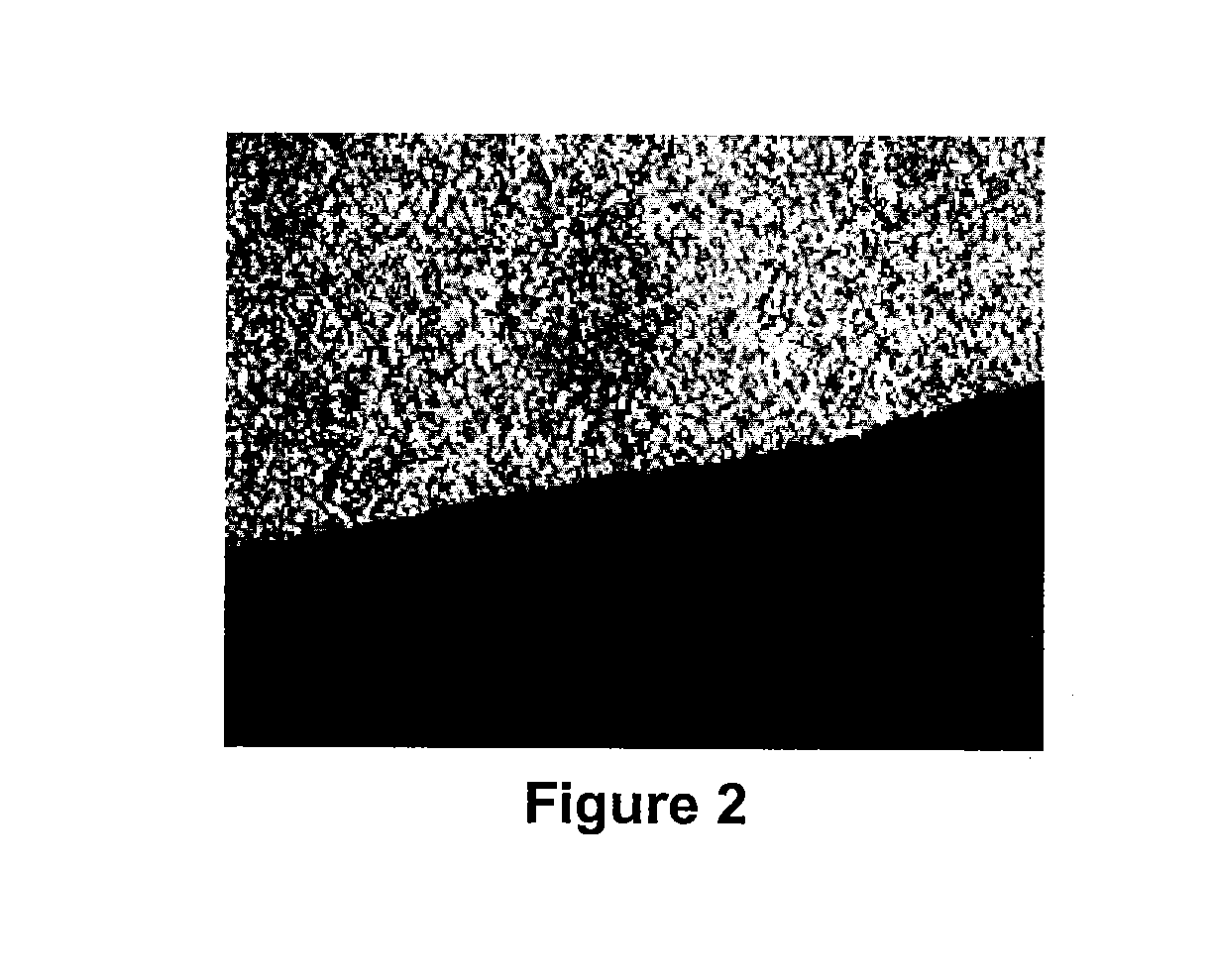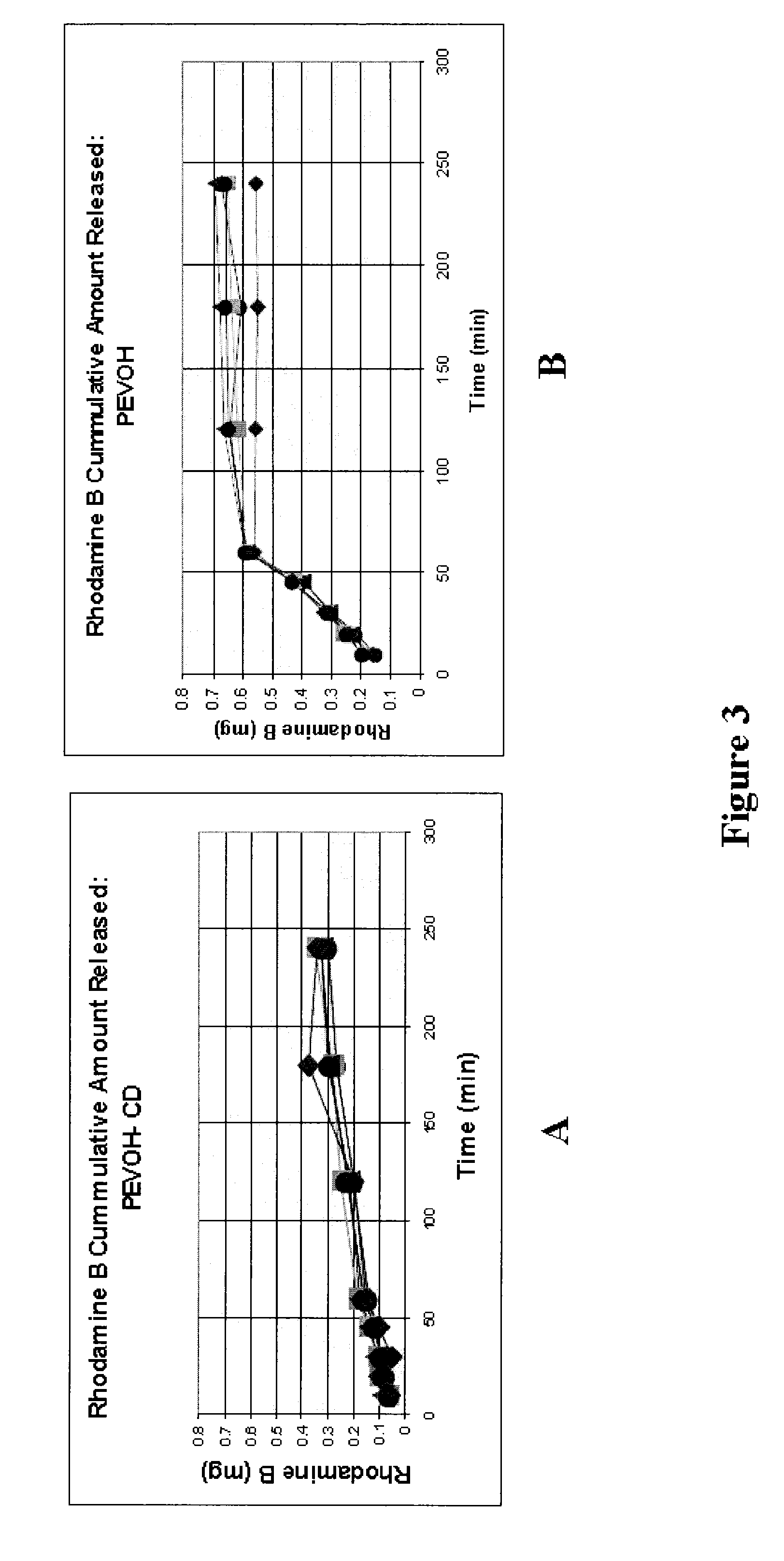Therapeutic agent delivery system and method
- Summary
- Abstract
- Description
- Claims
- Application Information
AI Technical Summary
Problems solved by technology
Method used
Image
Examples
example 1
Attaching Cyclodextrin to Surfaces and Showing Presence of Incorporated Drug
Methods
CD-thiol (CD-SH) Synthesis
[0103]Cyclodextrin is made suitable for conjugation to a surface by converting one of the hydroxyl groups to a thiol. This is done using a modified protocol as follows: Mix 0.300 g of 6-Tosyl-β-CD and 0.300 g of thiourea (1:16.5 molar ratio) in a 50 ml round bottom flask. Add 15 ml of 80% Methanol. Heat mixture under reflux for 2 days at about 100° C. Evaporate mixture in vacuum. Add 4.5 ml of 100% methanol and reflux for 1 hr. Filter the solid and dissolve it in 10.35 ml of 10% NaOH at 50° C. for 5 hr. Adjust the pH of solution to 2 using 10% HCl. Add 0.750 ml of Trichloroethylene and stir solution overnight. Filter the resulting precipitate and wash it with water. Evaporate in vacuum followed by repeated recrystallization from water. Yield of CD-SH should be approximately 50% as calculated by NMR.
CD Conjugation to pEVOH
[0104]Cyclodextrin is then conjugated to bulk poly(ethy...
example 2
Small Hydrophobic Drug Release from CD
[0116]Drugs Loaded into CD-Modified Polymer Surfaces
Materials
[0117]A β-cyclodextrin-Epichlorohydrin copolymer (50 mol % CD; 2-15 kDa) was purchased from CTD, Inc. (High Springs, Fla.). Poly(acrylic acid) (pAAc; 10 kDa; 40 wt % aqueous solution) was procured from Polysciences, Inc. (Warrington, Pa.). Desmodur RE (27 wt % triphenylmethane-4,4′,4″-triisocyanate in ethyl acetate) was obtained from Bayer MaterialScience LLC (Pittsburgh, Pa.). 1-Adamantanemethylamine (Ad) and N-hydroxysuccinimide (NHS) were purchased from Acros Organics (Geel, Belgium) and used as received. 6-Amino β-cyclodextrin (CD; Supelco) and N,N′-dicyclohexylcarbodiimide (DCC) were obtained from Sigma-Aldrich (St. Louis, Mo.). SCM-mPEG5000 and SCM-PEG3400-Fluorescein were purchased from Laysan Bio, Inc. (Arab, Ala.). 1-Ethyl-3-[3-dimethylaminopropyl]carbodiimide Hydrochloride (EDC) was obtained from Pierce Biotechnology (Rockford, Ill.). Lissamine Rhodamine B ethylenediamine (LR...
example 3
Different Antibiotics in CD-Surfaces
Methods
[0119]Poly(ethylene-co-vinyl alcohol) (PEVOH) was modified to contain β-CD side chains by first conjugating the polymer with a tosylate and then allowing for spontaneous reaction with a β-CDmonoamine. The resulting compounds were characterized by NMR and determined to have 2-10% CD substitution depending on the feed ratio. PEVOH and PEVOH-CD were pressed into 3 mm tablets containing 10% drug. Initial experiments were performed using Rhodamine as the model drug. Later experiments were performed using antibiotics (Rifampin, Novobiocin and Vancomycin). Samples were placed in PBS and kept agitated at 37° C. Periodic aliquots were removed and evaluated for drug content by fluorescence, or UV / Vis absorbance detection.
[0120]In vivo experiments were performed by implanting pellets similar to those above into the dorsal midline of C57Bl / 6 mice. Two days following implantation 1×106 bacteria (either E. coli or Staph. epi.) were injected subcutaneousl...
PUM
| Property | Measurement | Unit |
|---|---|---|
| Area | aaaaa | aaaaa |
| Affinity | aaaaa | aaaaa |
| Degradation properties | aaaaa | aaaaa |
Abstract
Description
Claims
Application Information
 Login to View More
Login to View More - R&D
- Intellectual Property
- Life Sciences
- Materials
- Tech Scout
- Unparalleled Data Quality
- Higher Quality Content
- 60% Fewer Hallucinations
Browse by: Latest US Patents, China's latest patents, Technical Efficacy Thesaurus, Application Domain, Technology Topic, Popular Technical Reports.
© 2025 PatSnap. All rights reserved.Legal|Privacy policy|Modern Slavery Act Transparency Statement|Sitemap|About US| Contact US: help@patsnap.com



